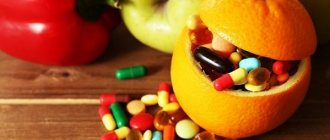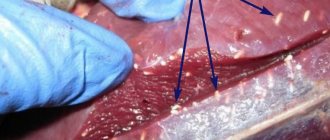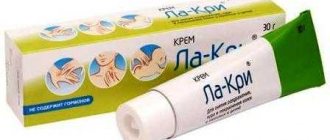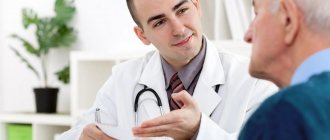REASONS FOR THE DEVELOPMENT OF HYPERVITAMINOSIS
The main cause of hypervitaminosis is outdated prejudices, due to which people take vitamins unnecessarily. Constant advertising of beneficial substances of synthetic origin, the lack of which frightens the population of the country, forces them to buy a lot of drugs and use them instead of healthy products. But does your body need it?
Since childhood, vitamins have been taken for prevention. Vitamin “C” – against viral diseases, vitamin “A” – against measles. No one conducts a preliminary consultation with a doctor, believing that the constant use of nutrients is salvation from all diseases. Guided by such an idea, it is very easy to develop hypervitaminosis.
The disease also occurs due to a number of reasons:
- errors by medical personnel;
- incorrectly prescribed injection drugs (intoxication);
- taking vitamin tablets in increased doses for a long time;
- poor diet;
- chronic diseases of various nature;
- age (both children and elderly people are affected by the disease).
The variety of reasons is the main incentive for preliminary consultation with a specialist. There is no need to diagnose yourself or rely on the advice of friends. Only a doctor should prescribe medications to maintain your health!
More about vitamin groups
There are fat-soluble and water-soluble vitamins. The first group is more difficult to remove from the body. For example, vitamins of groups K, E, D, A easily accumulate in adipose tissue and liver. Their reserves are too large, which causes hypervitaminosis. It is not easy to get rid of these substances, which contributes to the rapid development of surplus.
Water-soluble substances, in turn, enter the body with food or are produced by the liver independently. Intoxication with such vitamins is less dangerous. Excesses are eliminated naturally, and the necessary components are absorbed.
In children, hypervitaminosis develops due to a slow and unstable metabolism. The liver can hardly cope with overload, so the dosage of vitamins must be adjusted depending on the condition of the body. It will be significantly less than for adults.
As for intoxication with beneficial substances with one-sided nutrition, this rarely occurs. Try to balance your diet without relying on one type of food with a high content of active biological substances. If you ignore the rule, hypervitaminosis of several groups of vitamins at once is possible.
Description of Vitamin B2
In the first half of the twentieth century, scientists began to discover vitamins. As a result of laboratory tests, it was determined that some B vitamins are broken down under the influence of high and low temperatures, while others retain their structure. In this way, vitamins B1 and vitamin B2, which are resistant to temperature changes, were separated.
In 1933, the vitamin B2 molecule was isolated from vegetable pigment and named lactoflavin. And two years later, scientists managed to synthesize a yellow-orange powder, which they called riboflavin.
WHY IS OVEREXCESS OF VITAMINS DANGEROUS?
Hypervitaminosis can be acute or chronic. The acute form develops over several days or hours, depending on the dose of vitamins entering the body. Symptoms depend on the type of hypervitaminosis in the group, which is discussed in detail below. General signs of the disease are:
- weakness, nausea and dizziness;
- digestive disorders;
- tremor, muscle tremors;
- swelling.
Chronic hypervitaminosis develops longer – over the course of months. The reason for its occurrence is the systematic excess and consumption of the required dose of vitamins. Diagnosing the chronic form is more difficult. This requires laboratory analysis of urine and blood.
Excess Vitamin D
Vitamin D is responsible for calcium-phosphorus metabolism in the body. When there is an excess of it in a person’s blood, an increase in the level of calcium is observed, and in the tissues there is a deposition of calcium in the form of calcifications.
Acute hypervitaminosis D occurs with symptoms of toxic poisoning and dehydration:
- thirst;
- lack of appetite;
- dry skin;
- nausea and vomiting;
- diarrhea alternating with constipation;
- joint pain;
- abnormal heart rhythm;
- sleep disturbance;
- weakness.
Chronic hypervitaminosis D occurs mainly in preschool children and is characterized by children's retardation in physical and psycho-emotional development, disruption of the heart and kidneys, vegetative-vascular dystonia, premature closure of the fontanelles, and decreased immunity. Most often, this pathological condition is provoked by a violation of the dosage of medications with vitamin D.
SYMPTOMS AND CONSEQUENCES OF HYPERVITAMINOSIS
The type of hypervitaminosis depends on the group of vitamins, a surplus of which is observed in the body. Depending on this, a number of characteristic symptoms vary, allowing an accurate diagnosis to be made in order to begin treatment.
Hypervitaminosis "A"
This is the most classic example of a disease that was first described back in 1597. Almost 90% of the vitamin accumulates in the liver; neutralization occurs slowly. In 21 days, only 34% of the substance leaves the body.
Symptoms of the acute form:
- nausea;
- redness and inflammation of the eye cornea;
- lack of appetite;
- aching joints.
In the chronic form of hypervitaminosis “A” the following is observed:
- decreased visual acuity;
- increased intracranial pressure;
- high cholesterol;
- fragility of nail plates;
- hair loss.
In advanced stages, a person suffers from brittle bones, problems with the liver and kidneys. The disease is especially dangerous for pregnant women, as it leads to congenital deformities of the fetus.
Hypervitaminosis "B"
Occurs less frequently than the previous type of disease. As a rule, hypervitaminosis “B” occurs due to an overdose of injectable vitamin preparations.
Symptoms:
- loss of sensation in fingers and toes;
- dermatitis in the corners of the mouth;
- cramps in the calf muscles;
- thrombosis in blood vessels;
- impaired renal function, pernicious anemia;
- spinal cord damage (in severe cases).
More often the disease occurs in an acute form. Symptoms include widespread redness of the skin, diarrhea and nausea.
Hypervitaminosis "D"
As a rule, the disease is provoked by taking calciferols - synthetic vitamin D. This type of hypervitaminosis is more common in young children and the elderly.
Symptoms:
- lack of appetite, severe and constant nausea;
- high blood pressure;
- sudden weight loss;
- increased volume of urine output;
- convulsions;
- increased fatigue, constant headaches, depression.
Elderly people may suffer from jaundice, tremors, cardiomyopathy, and joint pain. Symptoms of the acute form include severe joint pain, bruising, and severe dehydration.
Hypervitaminosis "E"
Vitamin “E” accumulates quickly, but is difficult to remove from the body. The symptoms of this type of hypervitaminosis are general, so doctors have to talk with the patient to make an accurate diagnosis.
Symptoms:
- feeling of weakness;
- headache;
- double vision;
- loose stool.
Due to hypervitaminosis “E”, fat-soluble vitamins begin to be absorbed worse. Because of this, the risk of hypovitaminosis “A” and “E” increases.
Hypervitaminosis "C"
The disease poses the greatest danger to people suffering from cholelithiasis or urolithiasis.
Symptoms:
- decreased clarity of vision;
- insomnia;
- the appearance of a tendency to thrombosis;
- heart pathologies;
- deterioration of capillary permeability.
Other types of hypervitaminosis are much less common, but it is also worth knowing about them.
Other hypervitaminosis
A surplus of rutin (hypervitaminosis “P”) leads to increased blood clotting. Hypervitaminosis "K", in turn, is more common in newborns when an excessive dose of the drug "Vikasol" or "Menadione" is administered. Symptoms in adults are expressed in the form of increased blood viscosity, predisposition to thrombosis, migraines and varicose veins.
Effect of vitamin B2
Riboflavin is one of the most important elements of group B. It helps the process of converting dietary carbohydrates. Riboflavin is also involved in the processing of proteins and fats. Vitamin B complex is essential for healthy hair, skin, eyes and liver. They also support the functioning of the nervous system and the formation of red blood cells. Riboflavin also acts as an antioxidant in the human body.
Vitamin B2 is important in maintaining normal vision. Some scientific studies show that riboflavin may prevent the development of cataracts (clouding of the lens of the eye). There is also medical evidence that riboflavin can reduce the intensity of pain and its duration in migraines.
TREATMENT AND PREVENTION
Remember that treatment of hypervitaminosis must be carried out only under the supervision of a doctor! The specialist determines the cause of the disease based on the patient’s test data. Therapy consists of three main points that promote a speedy recovery.
First, the intake of excess vitamin is reduced to the required daily dose. This is achieved by adjusting a person’s diet and following a diet.
Next, symptomatic treatment begins. Painful or allergic reactions of the body to hypervitaminosis are eliminated. If you carry out only symptomatic therapy without reducing the supply of vitamins from outside, the disease will progress!
The last stage is detoxification. The body is cleansed of excess of certain substances, since a surplus of vitamins is similar to poisoning.
It is much easier to prevent a disease than to treat it. Carefully monitor the dosage of vitamins you take, having previously agreed on prevention with a specialist. Hypervitaminosis threatens all people, depending on age groups, so take it seriously!
Sources of Vitamin B2
The best sources of riboflavin are: brewer's yeast, almonds, processed meats, whole grains, sprouted wheat, wild rice, mushrooms, soybeans, milk, eggs, broccoli, Brussels sprouts and spinach. It should be taken into account that riboflavin is destroyed when exposed to light, so products must be stored away from light. A certain amount of vitamin B2 is lost during heat treatment of foods, as well as when they are soaked in water. An interesting fact about lactoflavin is that small amounts of this vitamin are produced by the human body itself.
Structure of riboflavin and its photolysis products
The presence of active double bonds in the cyclic structure of riboflavin determines some of the chemical reactions underlying its biological action. By adding hydrogen at the site of double bonds, colored riboflavin easily turns into a colorless leuco compound. The latter, giving up hydrogen under appropriate conditions, again turns into riboflavin, acquiring color. Thus, the chemical features of the structure of vitamin B2 and the properties determined by this structure predetermine the possibility of vitamin B2 participating in redox processes.
In redox reactions, semiquinone forms of riboflavin also arise, in the form of which riboflavin functions as an electron carrier. The study of riboflavin has led to the synthesis of more than 100 analogues. But among all the compounds obtained, few biologically active forms were found.
Requirement for vitamin B2
An adult's need for vitamin B2 is from 2.5 to 3.5 mg per day and from 1 to 3 mg for children. For the most part, this need is satisfied through food. Systematic consumption of B2 is especially important for women during pregnancy and lactation, children and adolescents, and people performing heavy physical work. There is evidence that with irregular consumption of vitamin B2, the need for it increases, so vitamin B2 must be administered with food daily. Intestinal bacteria synthesize B2, but it has not been established how much synthesized riboflavin can be absorbed in the human colon. When calculating dietary vitamin B2, you need to take into account only its content in food and in medications, if they were used.
Vitamin B2 content in food products
Vitamin B2 is widely distributed in all animal and plant tissues. It occurs either in a free state (eg, milk, retina) or, in most cases, as a protein-bound compound. Particularly rich sources of vitamin B2 are yeast, liver, kidneys, mammalian heart muscle, and fish products. Many plant foods are quite high in riboflavin.
Vitamin B2 hypovitaminosis
Vitamin B2 deficiency is very rare, but can occur in people with chronic liver disease and alcohol abuse.
As a result of vitamin B2 deficiency, the metabolism of carbohydrates, fats and proteins is disrupted. This leads to the development of chronic fatigue and muscle weakness.
Riboflavin hypovitaminosis primarily manifests itself on the skin and mucous membranes. Initial symptoms may be: sore throat and the appearance of ulcers, cracks in the corners of the mouth. On the part of the oral cavity, there is redness and enlargement of the tongue. Skin symptoms: dry skin, seborrheic dermatitis. Vitamin B2 deficiency leads to the development of eye diseases, cataracts, and increased sensitivity to bright light.
Chemical and physical properties of vitamin B2
The elucidation of the structure of vitamin B2 was helped by the observation that all drugs actively acting on growth had a yellow color and yellow-green florescence. It turned out that there is a parallelism between the intensity of this color and the growth-stimulating factor under certain conditions.
A substance with yellow-green fluorescence, soluble in water, turned out to be very common in nature; it belongs to a group of natural pigments known as flavins. These include, for example, milk flavin (lactoflavin). Lactoflavin was isolated in chemically pure form and its identity with vitamin B2 was proven. Vitamin B2 is a yellow crystalline substance, highly soluble in water, which is destroyed when irradiated with ultraviolet rays to form biologically inactive compounds (lumiflavin in an alkaline environment and lumichrome in a neutral or acidic environment).
Vitamin B2 is a methylated derivative of isoalloxazine, to which ribitol alcohol is attached at position 9; Therefore, vitamin B2 is often called riboflavin, that is, flavin to which the pentahydric alcohol ribitol is attached.
The molecular weight of riboflavin is 376.4. The melting point is 271 and 293 degrees, which apparently depends on the polymorphism of riboflavin. Two different forms of riboflavin were discovered by Shimizu in 1956 and some other researchers. These forms differed in some physical and chemical properties. Compounds with a lower melting point are more soluble in water compared to a compound with a higher melting point. The absorption spectrum, Rf value, fluorescence pattern, photolysis and chemical reactions of solutions for both forms of riboflavin are more or less identical. At room temperature it gives saturated solutions already at a content of 25 µg%. Riboflavin is less soluble in ether, chloroform and benzene. When precipitated, it forms needle-shaped orange-yellow crystals. In a neutral aqueous solution it has a bright yellow-green fluorescence with a maximum at about 545 nm. Fluorescence is associated with the presence of a free amino group in the 3rd position. Riboflavin is rapidly destroyed in alkaline solutions, especially when heated, but is highly stable in acidic environments. It is also resistant to oxidizing agents, with the exception of potassium permanganate and chromic acid. Riboflavin is very sensitive to light - up to 60% can be destroyed in 3 hours. When illuminated in an alkaline environment, its molecule loses 4 carbon atoms from the side chain and turns into lumiflamin (6,7,9 - trimethyl - isoamoxazine). When Riboflavin is illuminated in a neutral or acidic environment, it turns into lumichrome (6,7-dimethyl - aloxazil) .
Conditions required for the biological activity of riboflavin analogues
- The isoalloxine ring with the pentose residue at position 9 should remain unchanged.
- The imino group in the 3rd position should not be replaced.
- The methyl groups at the 6th and 7th positions should not be removed simultaneously.










